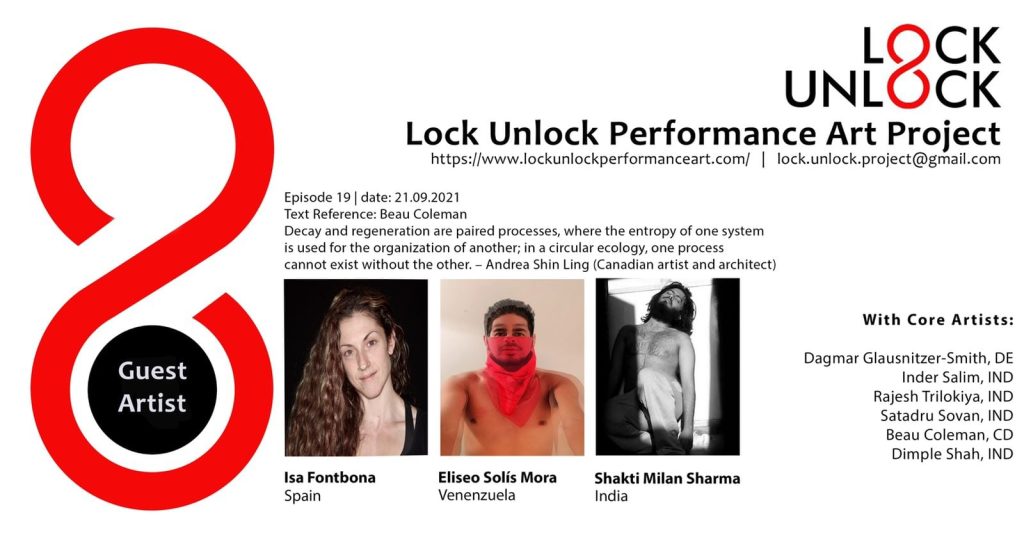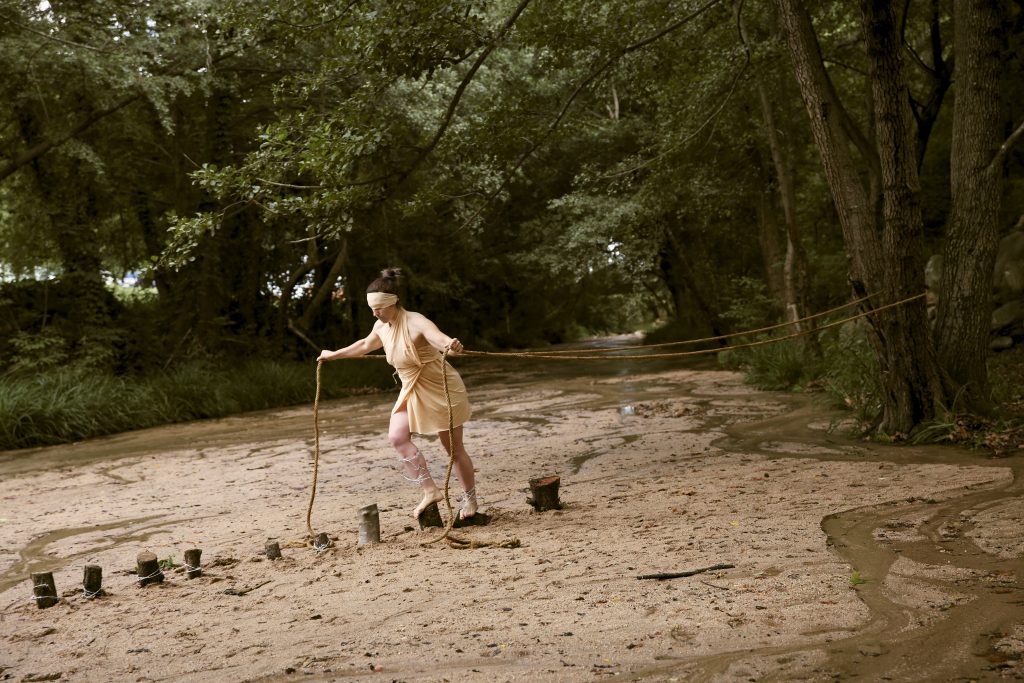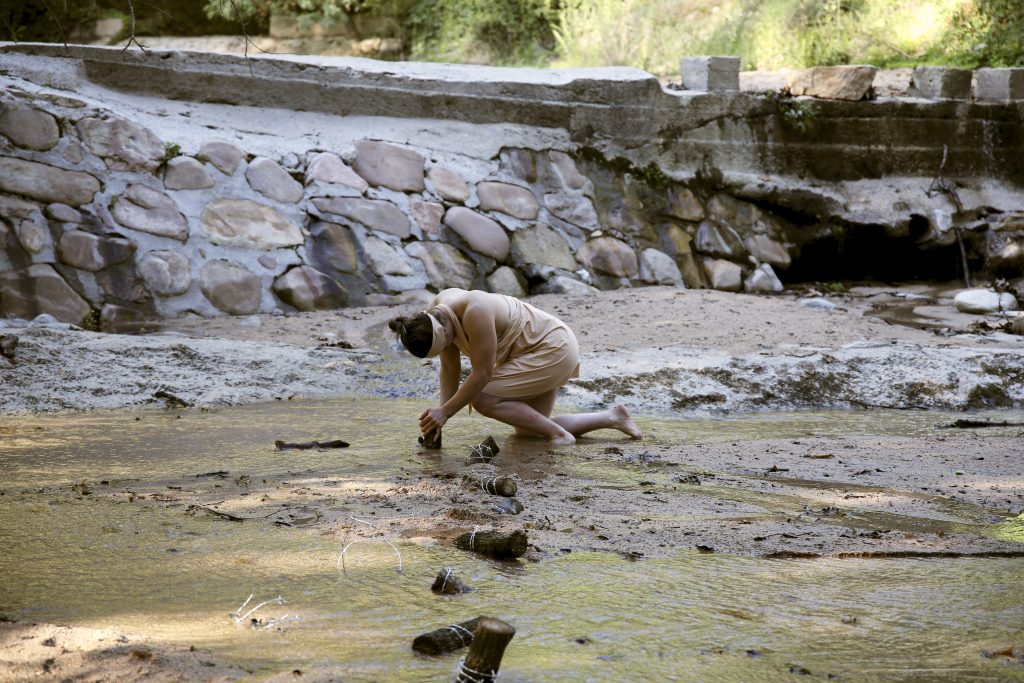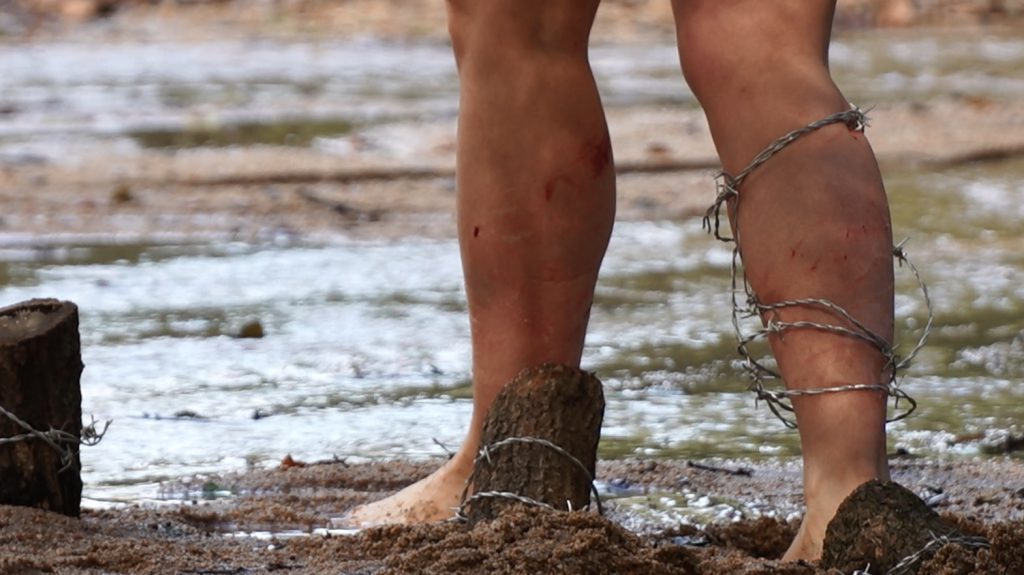THE CIRCULAR PATH
BETWEEN DECAY AND
REGENERATION
September 21, 2021 Episode #19. Lock Unlock International Performance Art Project.
9 Performances simultaneously from different locations: India, Canada, Venezuela, Germany
Organized by: Lock Unlock. Dagmar I. Glausnitzer-Smith (DE); Beau Coleman (CD); Anupam
Saikia (IND); Hector Canonge (US); Dimple Shah (IND); Mukesh Singh (IND); Rajesh Trilokya
(IND); Inder Salim (IND); Satadru Sovan (IND)
https://www.lockunlockperformanceart.com/
Photo credits: Aida Moscoso




In dialogue with nature, while expressing the visible impact of the return of the human being to the unconfined rhythm, the piece developed in the stream of Santa Coloma de Farners. A small river that nowadays is almost dry.
Through this performance I tried to reflect how I felt during the most restrictive initial confinement, faced with uncertainty, the difficulty of moving forward despite and trying, constantly falling into apathy and discouragement. It is not yet clear enough what consequences will emerge as a
result of this period of our lives, but I intended to make them visible in some way through the wounds caused by the barbed wire.
Everything was falling apart and we had no idea where, or how long this period would last. That’s why the elements chosen: the logs that traced a path without a specific end, none of them straight and that didn’t hold up very well, the barbed wire element, wearing blindfolds, the ropes…
The piece ended up spitting out ash (ash that I carried in my mouth throughout the piece) in tune with the text (the thread that connected all the pieces), which speaks of decay and deterioration, and the opposite side , regeneration, all of them as faces in the same way. That’s why he fell,
and got up again. That’s why this ash, of what was and that resonates in the air as that “wanting to say” that could not be spoken until then.
TEXT OF REFERENCE
“Decay and regeneration are paired processes, where the entropy of one system is used for the organization of another; in a circular ecology, one process cannot exist without the other.
What does it mean after a year such as this, to regenerate one’s practice? What have we left to deteriorate, and what do we use as fodder and fuel for new creation? I ask this in the most literal sense, as the work I make is often designed to actually decay, employing and partnering with other organisms to assist in the process. The scale (temporal and physical) at which decay and
regeneration occurs may not always be perceptible to the human eye – geological time and microbial time are challenging to understand – but they are happening nonetheless and the consequences are concrete rather than speculative.”
Andrea Shin Ling (Canadian artist and architect).
